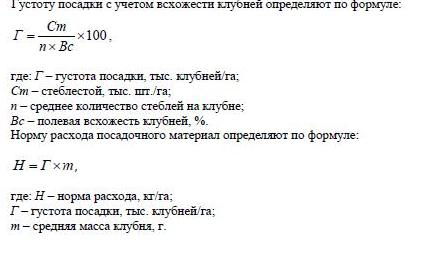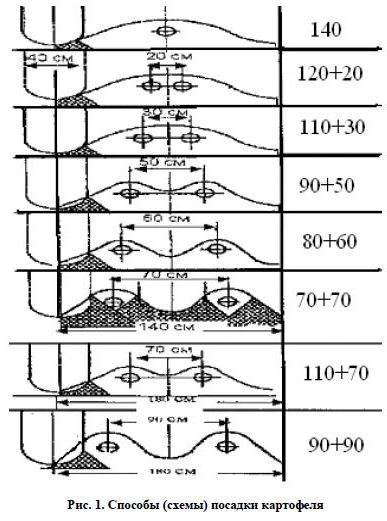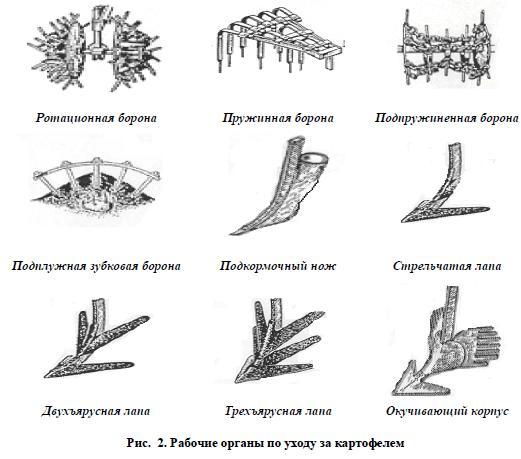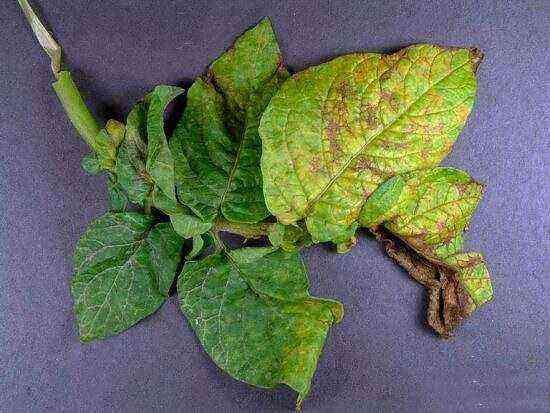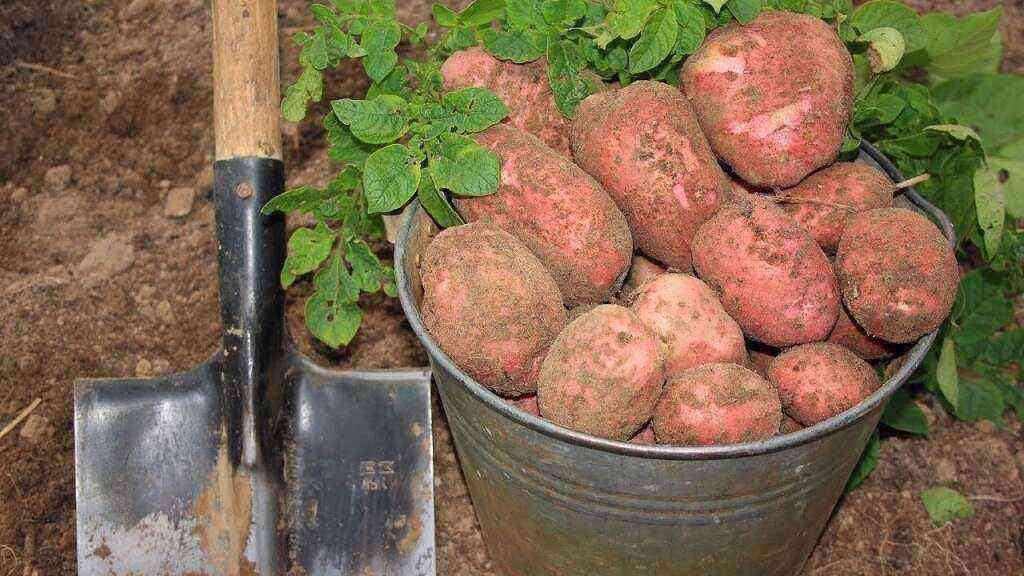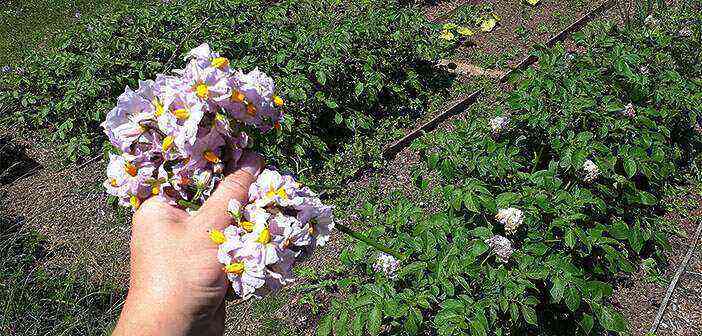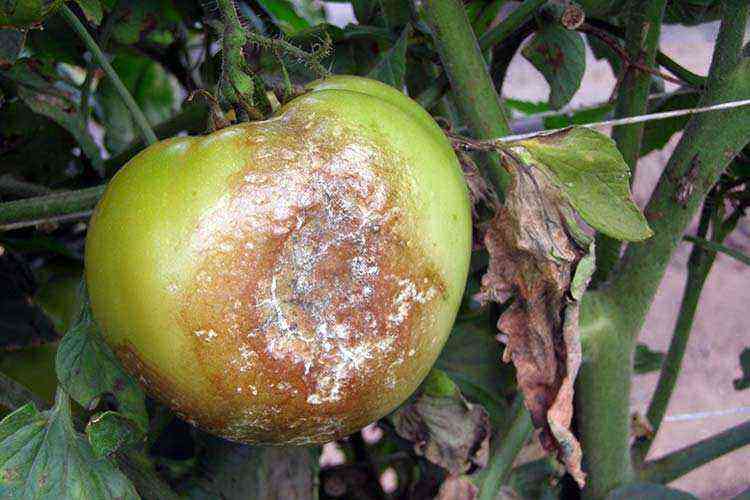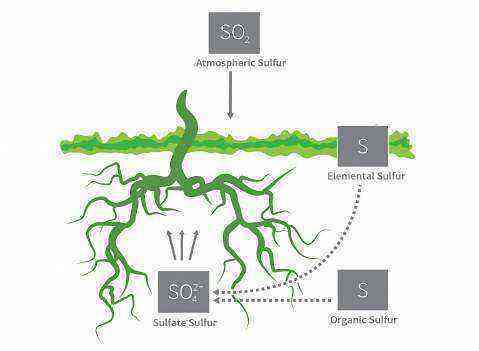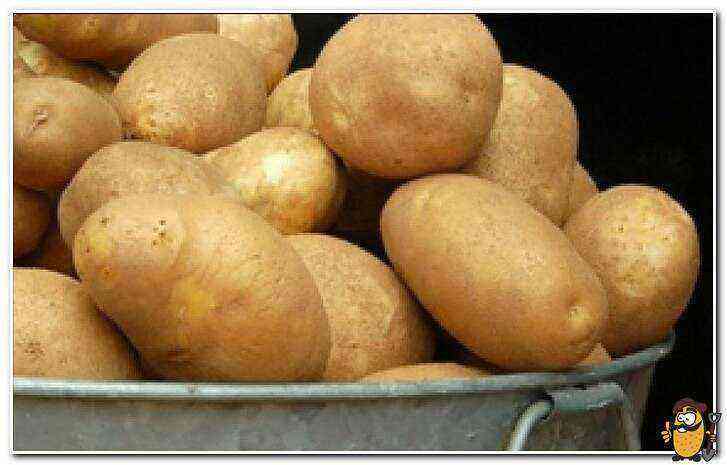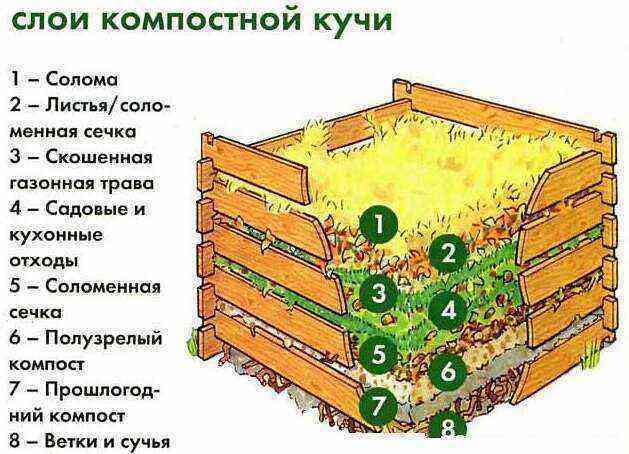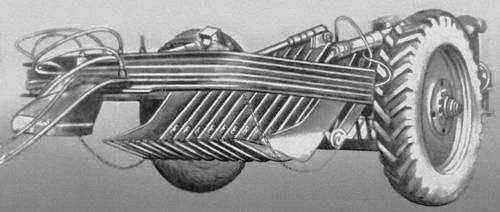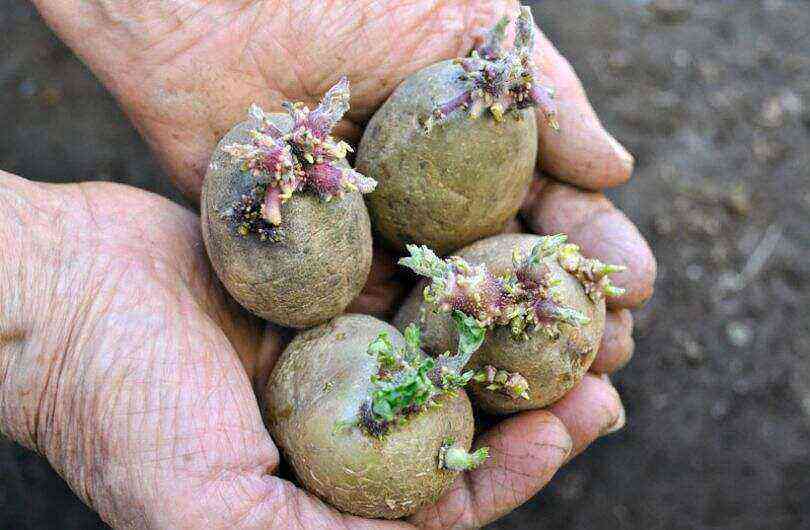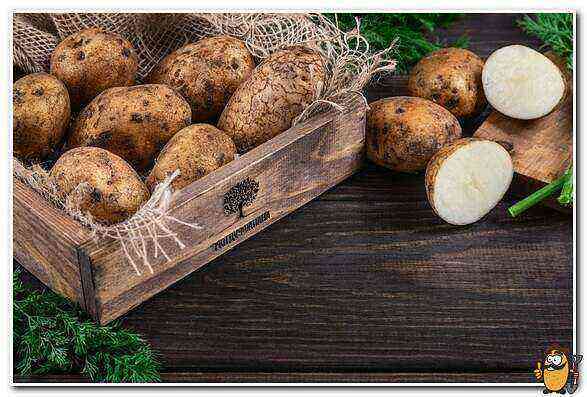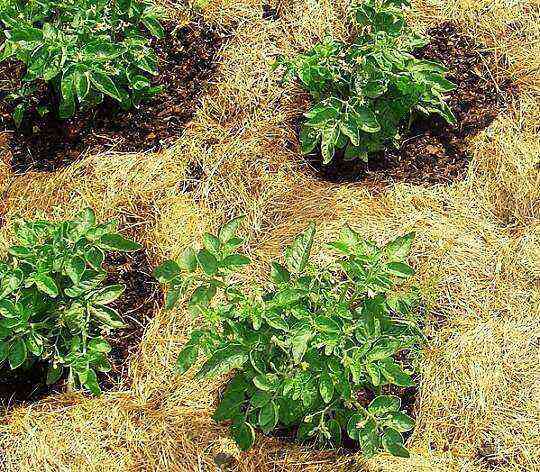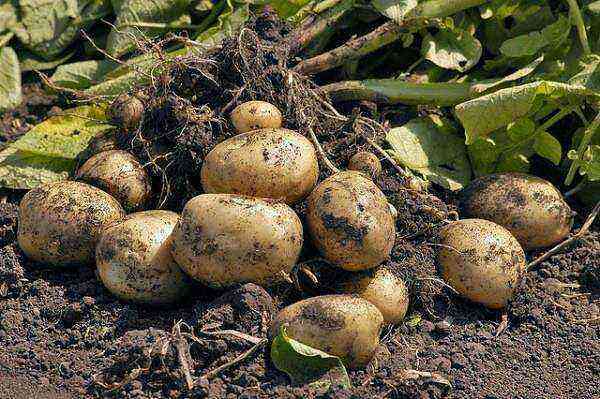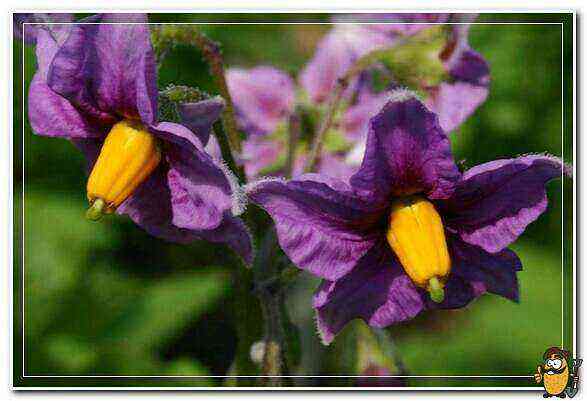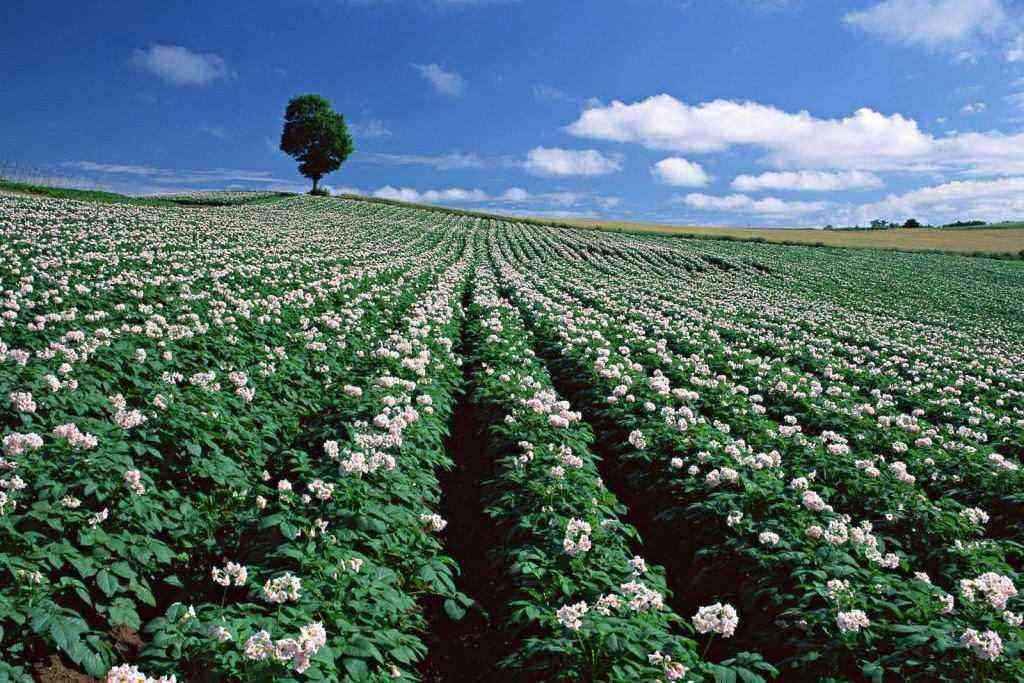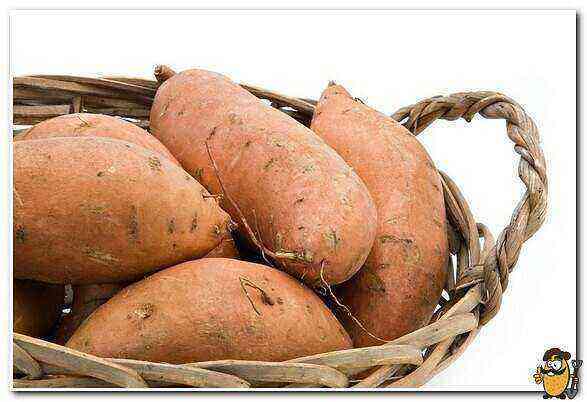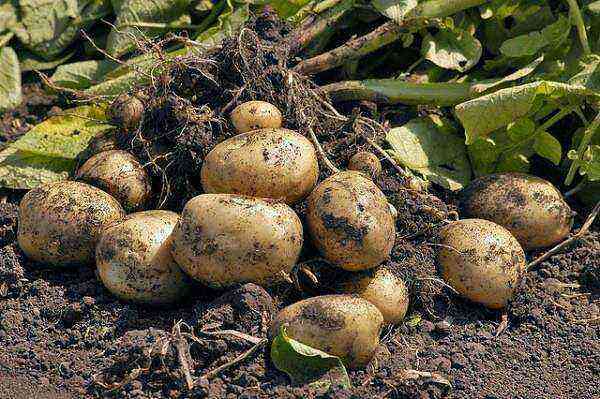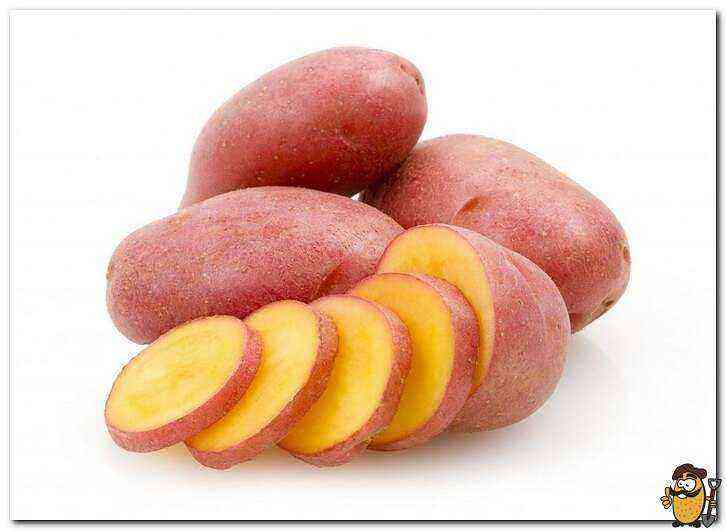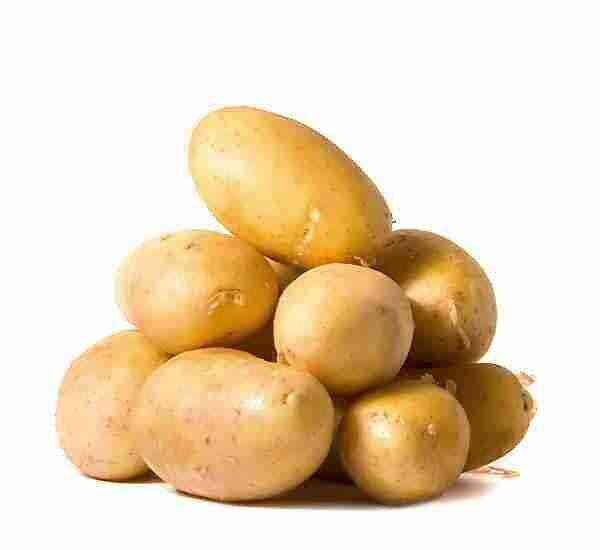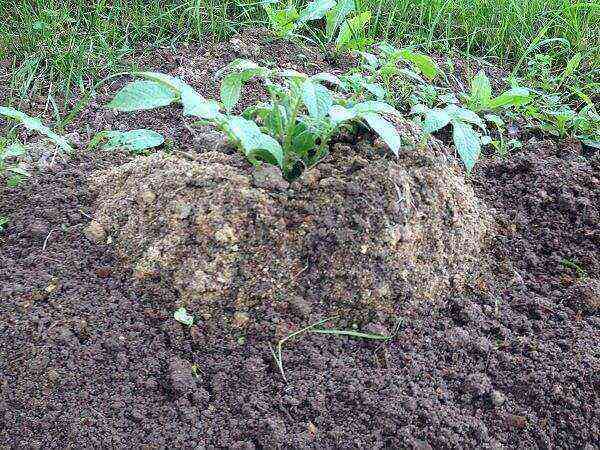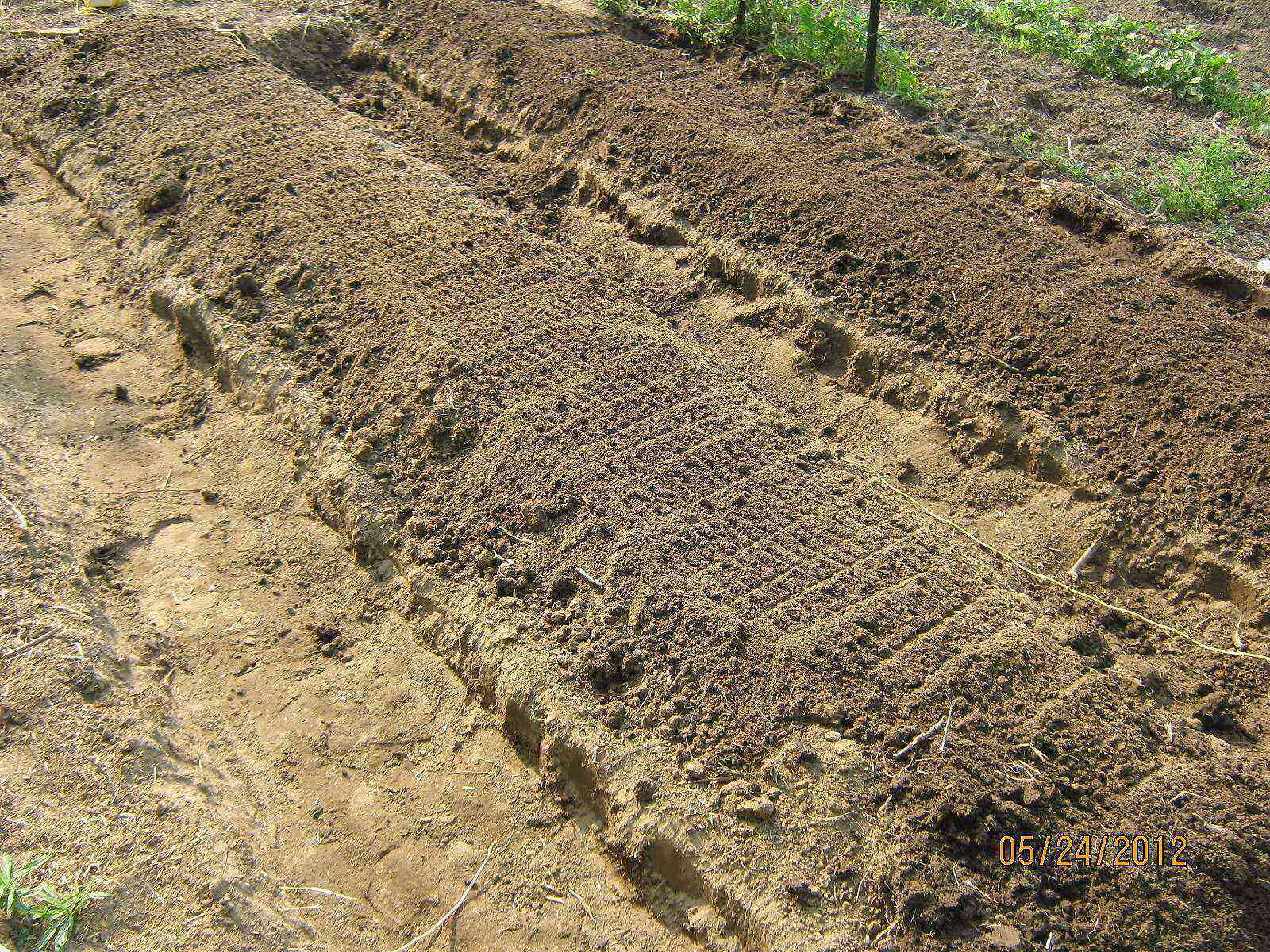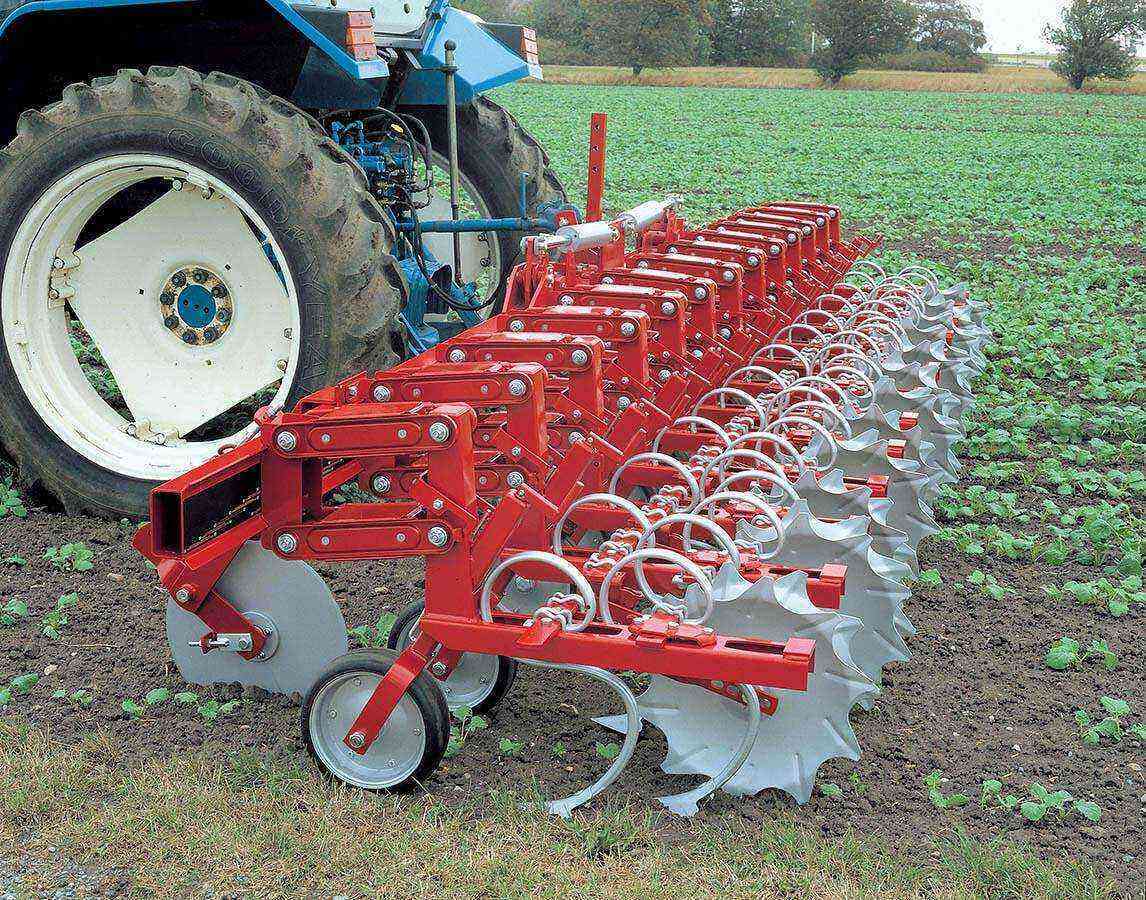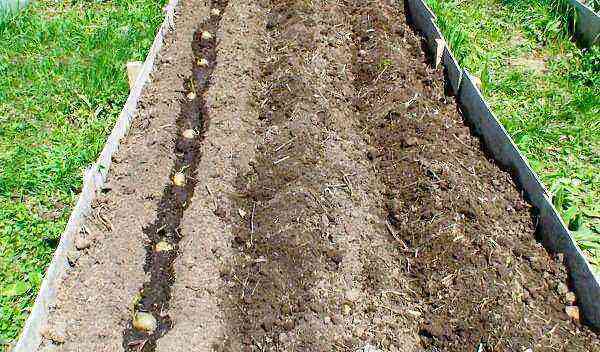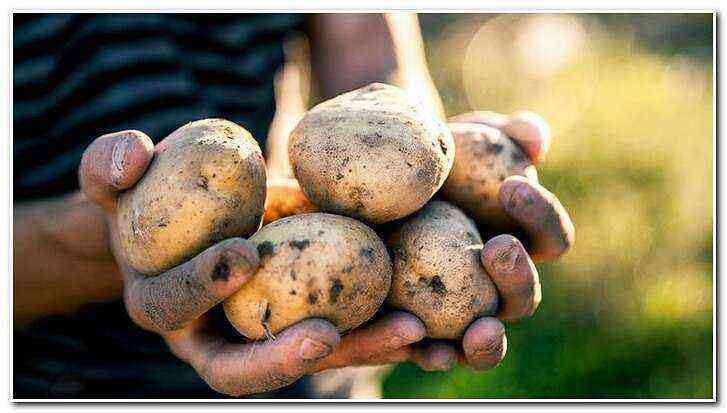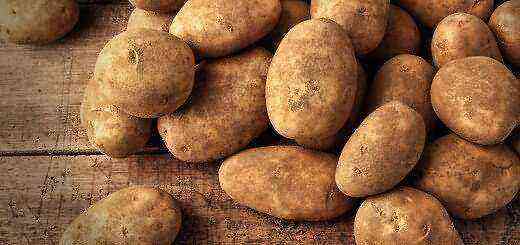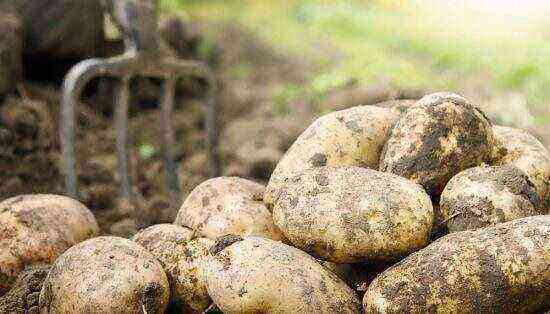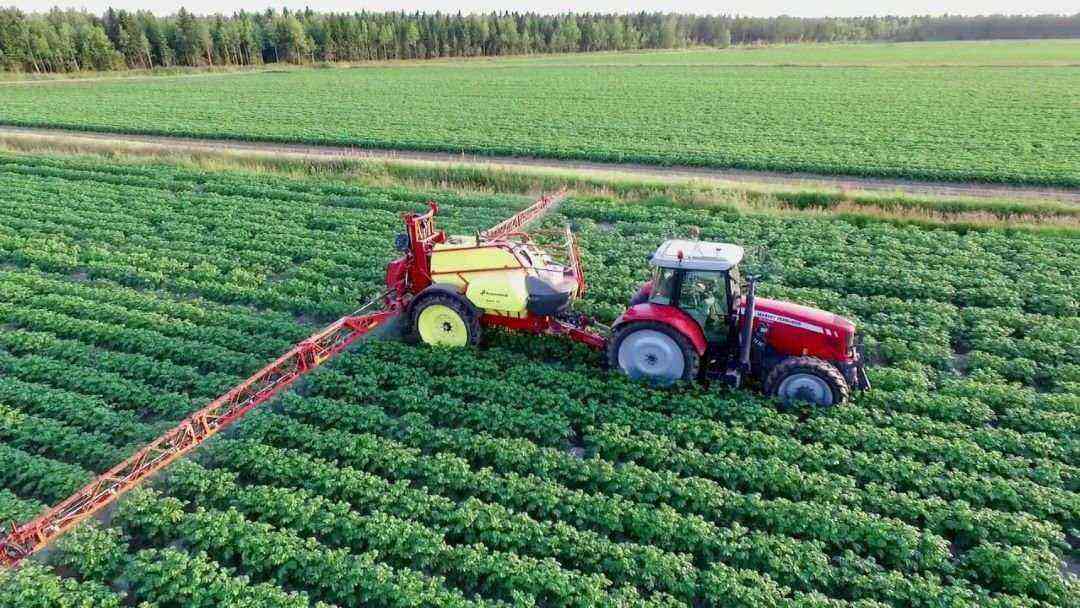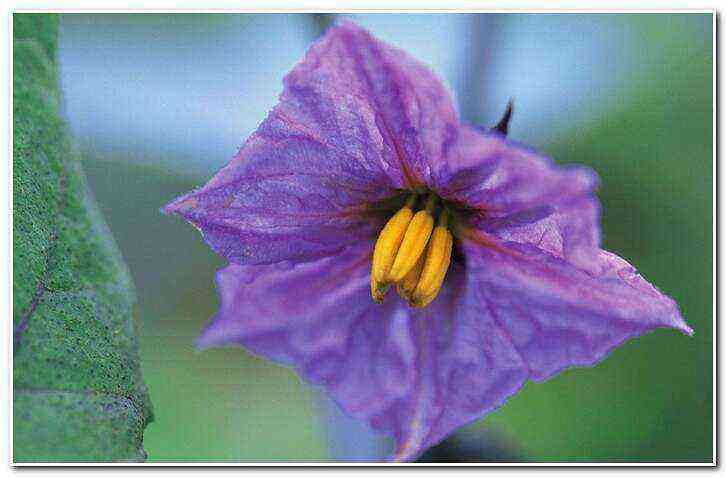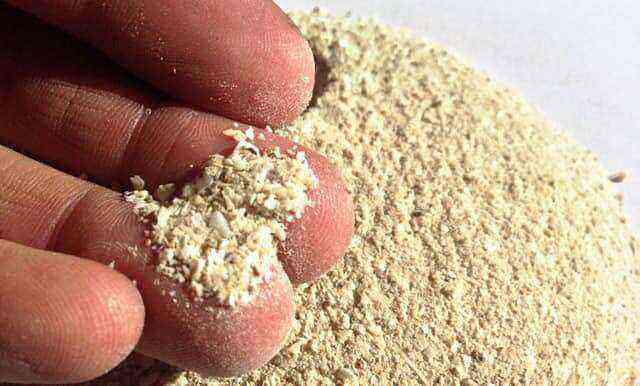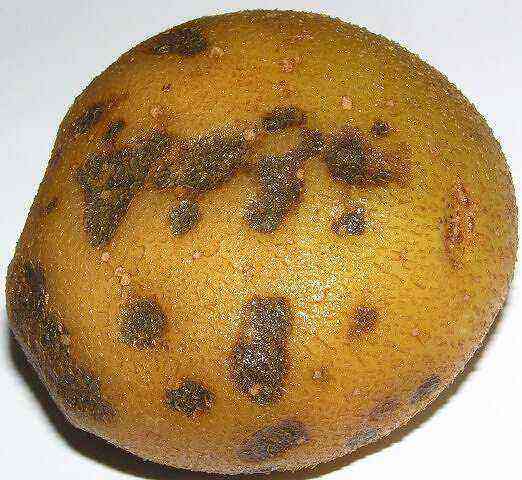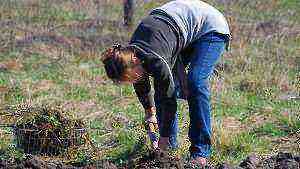Site selection and placement of crops
Potatoes for food purposes are cultivated on sod-podzolic light-medium loamy, sandy loam, well aerated, underlain by cohesive parent rocks. Different types of cultivated soils are suitable for potatoes for technical purposes.
Sandy, stony (more than 100 t / ha), heavy loamy and clayey soils, highly compacted and excessively moist, areas with low fertility, strong weed grass and wireworm infestation are not suitable.
The optimum density of the topsoil for loam is 1,0-1,2 g / cm3, for sandy loams – 1,3-1,5 g / cm3, soil moisture – within 70-80% HB, aeration duty cycle – 20-30% of the total pore volume.
Optimal agrochemical parameters of soils: pH (KC1) 5,3-5,8, humus content not less than 1,8%, mobile phosphorus and exchangeable potassium not less than 150-200 mg / kg of soil. Potatoes tolerate increased soil acidity well.
When placing potatoes, it is necessary to observe the spatial isolation of varieties with different degrees of resistance to late blight and different purposes (seed and food) – at least 100 m. disease resistance.
The most harmful viruses that infect potatoes are spread by sucking insects: aphids, bedbugs, cicadas. Therefore, seed plantings, primarily breeding nurseries, are recommended to be placed as far as possible from the wintering and spring breeding sites of aphids: greenhouse farms, orchards, vegetable gardens, plantings of perennial ornamental crops, as well as from commercial potato plantings. The level of the infectious background of entomophilic viruses decreases in proportion to the square of the distance from the sources of infection.
The protective effect of spatial isolation is enhanced if there are barriers between sources of infection and seed crops in the form of afforestation or high-stemmed crops. The smallest infectious background of entomophilic viruses is observed in areas surrounded by grain crops, maize, and alfalfa.
Choosing a predecessor
The best precursors for potatoes are legumes, cereals, green manure crops, perennial grass turnover, and annual grasses. These crops create optimal conditions for supplying potatoes with nutrients, improve the water-air regime of the soil, reduce the stock of infection and the number of harmful insects in it. The greatest fungistatic effect on pathogens is exerted by rapeseed, oil radish, lupine and peas. They almost 2 times reduce the number of pathogens of common scab, 2,5 times – rhizoctonia and 3-10 times – rubber rot. Their cleansing effect is comparable to the use of seed dressings for these purposes.
In the presence of the causative agent of the stem nematode in the soil, vetch-oat mixture, winter cereals are recommended as preceding crops, and black fallow for seed plantings. In the fight against common scab, it is advisable to plant potatoes on winter rye, legumes, lupine, leguminous crops, as well as green manure (lupine, winter rye, oil radish, rapeseed, etc.).
It should be borne in mind that buckwheat, corn, clover, vegetables contribute to the accumulation of stem nematodes in the soil. It is recommended to avoid beets, carrots and cabbage as precursors, as they increase the damage to tubers by common scab and rhizoctonia. The saturation of crop rotations with seed potatoes should not exceed 25%. The following crop rotation schemes are recommended for growing seed potatoes:
1- potatoes; 2 – barley; 3 – vetch-oat mixture; 4 – winter rapeseed (green manure).
1- potatoes; 2 – spring cereals with over-sowing of clover; 3 – clover; 4 – clover; 5 – winter cereals.
1- potatoes; 2 – winter cereals; 3 – cruciferous (rapeseed, oil radish); 4 – spring cereals; 5 – legumes.
The crop rotation patterns in the crop rotation when growing food and industrial potatoes are shown in Table 1.
In non-specialized crop rotations, potatoes should be returned to the same field no earlier than after 4 years. When growing ware potatoes in exceptional cases (stony soils, lack of suitable soils for agrochemical indicators, etc.), it is allowed to return to its original place after 2-3 years, provided that the most effective predecessors are used and the full scope of protective measures is taken.
A decrease in the number and harmfulness of the golden potato nematode can be achieved by growing nematode-resistant varieties in special anti-nematode crop rotations with the inclusion of perennial cereals and legumes, legumes and corn. The best links in crop rotation for clearing the soil from golden potato nematodes are the following: lupine – winter rye – a nematode-resistant potato variety; cabbage crops – winter rye – a nematode-resistant potato variety. Potatoes are a good precursor for cereals, flax, rapeseed and row crops.
The purpose of soil cultivation for potatoes is to create optimal water-air and nutritional regimes, volumetric ridge, optimal density and lumpiness in the tuberization zone, uniform distribution of organic and mineral fertilizers, and destruction of weeds.
The main stages of soil preparation include stubble cutting, plowing, pre-planting cultivation and ridging.
After harvesting the predecessor, but no later than seven days, peeling is carried out: disc cultivators LDG-10A, LDG-5, L-111; heavy disc harrows BDT-3, BDT-7, BDT-10; chisel cultivators KCh-5,1, KChN-5,4, KChN-1,8. On soils, clean of rhizome and root-sprouting weeds, the depth of loosening should be 5-7 cm, on weedy soil – 10-12 cm.
Soil plowing is carried out with the introduction of organic and mineral fertilizers, the cultivation of catch crops, on the fields heavily infested with rhizome weeds after the preliminary application of glyphosate-containing herbicides. Herbicides – derivatives of glyphosate should be used during the period of accumulation of nutrients by vegetating perennial weeds, which promotes the penetration of drugs into the vital organs and causes their complete death.
When cultivating potatoes on sandy and sandy loam soils, clean from rhizome weeds, as well as after growing green manure crops, in the fall, deep loosening up to 35-40 cm is carried out with combined units of the RSH-3,5 type; PRPV-5-50; KCH-5,1; ARC-4,5.
Spring cultivation begins with the onset of physical ripeness of the soil. The soil is considered ripe if it is not smeared, and when it is squeezed, a lump is formed in the hand, crumbling when falling from a height of 1 m. The first cultivation (closing of soil moisture) is carried out to a depth of 5-7 cm with KPS-4 cultivators; KPSh-8; Bullpen-9,7; the second (before planting, cutting the ridges) – to a depth of 18-20 cm. Cultivation is carried out at an angle of 450 to the direction of plowing and each subsequent one – in a diagonal-cross direction to the previous one.
Spring cultivation of loamy soils, not clogged with stones, is best performed by active milling (rotary machines MRP-2,1; PAN-2,8; KVF-2,8; KVF-4; vertical milling cultivators “RABEVERK-RKE 300”; Lemken “Zircon 7/300”, etc.), this allows you to create a fine lumpy structure on such soils in the tuberization zone. Cutting ridges on medium to heavy soils is carried out 3-7 days before planting. Ridge height: on loamy soils 12-14 cm; on the lungs – 14-16 cm; in conditions of excessive moisture – 16-18 cm from the bottom of the furrow. Deviations – no more than ± 2 cm. On light soils, cutting ridges is impractical. For cutting the ridges, cultivators KRN-4,2 are used; KGO-3, AK-2,8, etc.
Application of fertilizers
The formation of 10,0 tons of potatoes requires 40-60 kg of d.v. nitrogen, 15-20 – phosphorus and 70-90 – potassium, 20-40 – sulfur, 10-25 – magnesium, 25-50 kg of ae. calcium and a number of trace elements.
On sod-podzolic loamy and sandy loam soils, it is necessary to apply 50-60 t / ha of organic fertilizers in the fall or under the previous crop. The spring application of organic fertilizers, especially on loamy soils, leads to a delay in the timing of field work and a significant overconsolidation of the soil. The best forms of organic fertilizers for potatoes are well-rotted straw manure and peat-manure composts, which contribute to an increase in humus reserves in the soil.
Mandatory requirements when applying any types of organic fertilizers are uniformity of their distribution over the surface of the field and quick incorporation into the soil within 3-5 hours after spreading. Organic fertilizers are applied by MTT-4 machines; PRT-7; PRT-11 and others.
Plowing of green manure crops (oil radish, rapeseed, winter rye, narrow-leaved lupine, etc.) with a biomass yield of more than 20 t / ha is equivalent to the application of 30 t / ha of organic fertilizers. On seed plantings, cultivation of green manures for phytosanitary indicators and the effect on the quality of tubers is preferable to the use of organic fertilizers. Mineral fertilizers for potatoes are traditionally applied before planting in a scattered way or locally when planting with planters with fertilizer dispensers. The rates of mineral fertilizers are calculated taking into account soil fertility, the amount and form of applied organic fertilizers, and the planned yield (Table 2).
The full dose of nitrogen fertilizers on sod-podzolic medium loamy soils is used for cultivation or cutting ridges in one step, on sandy loamy soils – in two steps. If necessary, top dressing (especially for light soils) is applied up to 30-40 kg / ha a.i. at a plant height of 10-15 cm. The best forms of nitrogen fertilizers for feeding are potassium and ammonium nitrate or UAN.
Phosphorus fertilizers on medium and heavy soils are applied in autumn, on light soils – for pre-sowing cultivation. When using planters with fertilizer dispensers, they are brought into rows with an application rate of 20-30 kg / ha.
Potash chlorine-containing fertilizers are recommended to be used in the fall for the main treatment; on sandy and sandy soils, spring application is possible. Increased doses of potash fertilizers in the zone of radioactive contamination reduce the contamination of products with cesium 137 and strontium 90.
When growing potatoes, the following forms of fertilizers are used: nitrogen – ammonium sulfate, ammonium sulfate with a protective coating, carbamide, slow-acting carbamide with a plant growth regulator “hydrohumate”, potassium nitrate, UAN; phosphoric – ammophos, superphosphate, ammoniated superphosphate; potash – granular potassium chloride, small potassium chloride, coarse-grained potassium chloride, mixed potassium salt; complex slow-acting – nitrogen-phosphorus-potassium: nitrophoska nitric sulfate, nitroammofoska, potato kemira, ecolist, basfoliaries, aquarin, etc., which are also introduced as foliar dressings during the growing season of plants according to the recommendations of manufacturers.
In the fight against common scab, it is advisable to replace part of mineral fertilizers with physiologically acidic forms (superphosphate, ammonium sulfate). A positive effect against this disease is provided by the application of these fertilizers simultaneously with the planting of potatoes in doses of 0,15-0,25 t / ha in physical weight. In fields where common scab is especially widespread, it is possible to feed potatoes with mass tying of tubers with manganese sulfate or ammonium sulfate – 60 kg / ha.
For potatoes, in addition to the main fertilizers, it is advisable to apply before planting 30-50 kg / ha of magnesium and 30-60 kg / ha of sulfur for a. In. or during the growing season, special compositions of micronutrient fertilizers by foliar feeding.
On peat and other soils, where potato plants lack copper, it is necessary to use copper sulfate in conjunction with other mineral fertilizers at the rate of 4 kg / ha ai.
Mineral fertilizers are applied by MTT-4Sh machines; 4U; SU-12; L-116; AVU-0,7; RDU-1,5; RSHU-12; APZh-12.
Application of plant growth regulators
In potato growing, growth regulators are used to a lesser extent than on cereals, vegetables and other crops, although they can regulate the processes of growth, development and influence the yield of potatoes. Growth regulators increase the number of awakened buds in the eyes of the tuber, which has a positive effect on the number of sprouts formed on the tuber, the density of the stem and the yield of potatoes. The activation of growth processes in the seed tuber at the very beginning of the development of potato plants contributes to the earlier emergence of seedlings and the onset of the main phases of ontogenesis. A more intensive development of plants makes it possible to quickly switch to feeding on their own root system, to use more efficiently the reserves of spring productive moisture for the formation of vegetative organs, to consume nutrients from the soil more fully and for a longer period, and to accumulate crops at an earlier date.
Physiologically active substances have a different effect on potato plants at different stages of their development. Their effectiveness depends on weather conditions and biological characteristics of the variety. To stimulate plant growth and development, increase disease resistance, yield and quality of tubers, potatoes can be sprayed with agate-25K, hydrohumate, immunocytophyte, quartazine, oxygumate, potassium, and successively seibit-B 1 + seibit-B2 + seibit-B 3, phenomelan ( guarantor), emistim C, epin.
Preparation of planting material
The selection of a variety depends on the purpose of using the crop and soil and climatic conditions. In addition, the cultivation of resistant varieties is one of the main methods of combating diseases and pests of potatoes. Varieties with increased resistance to pests require a minimum number of treatments with chemical and biological preparations, increase the effectiveness of protective measures, significantly reduce environmental pollution with pesticides, and reduce the amount of infection and its aggressiveness. On resistant varieties, pests reproduce weaker and their offspring are less viable.
Planting material must meet the requirements of STB 1224-2000. “Seed potatoes. Technical conditions “.
The preparation of planting material includes: sorting, calibration, air-thermal heating (germination), dressing and treatment of tubers with stimulating substances. Seed material is sorted into fractions according to the largest transverse diameter:
– for round-oval varieties – less than 30 mm, 30-60 mm, more than 60 mm;
– for varieties with an elongated shape – respectively less than 28 mm, 28-55 mm and over 55 mm.
Each fraction may contain no more than 3% by mass of tubers of adjacent fractions. Non-standard, not typical for the variety, rotten, diseased tubers, as well as impurities are removed. For planting potatoes for technical and food purposes, tubers are used with fractions of 30-60 mm in diameter and weighing 50-80 g. In seed plantings, when multiplying high reproductions and scarce varieties, all fractions are used, but they are planted separately.
Air-thermal heating is carried out within 10-14 days. At the same time, in a storage with active ventilation, the temperature of the tuber mound is gradually raised by heated air by 1 ° C per day and brought to 8 … 15 ° C. To obtain early production, preliminary germination of potato tubers of early and medium early varieties is carried out. For this, seed potatoes, with a layer of 2-3 tubers, are poured into wooden or plastic boxes and placed for germination in special rooms with a controlled microclimate. Potatoes are germinated in the light at a temperature of 15 … 18 ° C for 20-25 days. It is necessary that the length of the light sprouts does not exceed 1 cm. With a more intensive growth of sprouts, or with a delay in planting due to unfavorable climatic conditions, the temperature during the day is reduced to 5 degrees.
Cutting seed tubers is not advisable, as it leads to re-infection of tubers with fungal, bacterial and viral diseases. It has been proven that after cutting a tuber affected by bacteriosis, an infection remains on the knife, sufficient to infect subsequent 12-15 tubers. If there is an urgent need for cutting, the knife after cutting each tuber is disinfected in
a solution of lysol or lysoform. Cut tubers can be moistened (no later than ½ hour after cutting) with a suspension of TMTD – 4-5 kg / t, or foundation (benomyl) – 0,5-1 kg / t. An important technique that contributes to better preservation of seed potatoes, increasing germination and preventing disease damage to plants is autumn and spring
gardening of tubers.
Unsorted and uncalibrated lots of potatoes are not allowed for planting. When choosing the planting density, it is necessary to take into account the purpose of the cultivated potatoes, the particle size distribution and soil fertility, and the biological characteristics of the varieties. The consumption rate depends on the size of the planting material. Larger tubers produce more sprouts than smaller ones (one of the reasons for the need to calibrate tubers by size (weight) before planting). For tubers of seed fractions, the number of stems can be from 2 to 7 pieces or more, and this indicator depends on the variety. The final planting density is set taking into account the germination of the tubers. To determine the germination of potatoes from a batch of seed material, an average sample of tubers of the planting fraction is taken (GOST 11856). From the total mass, samples are placed for germination in plastic bags 0,3 x 0,9 m in size, 100 tubers in 3 replicates. In bags for air exchange, holes with a diameter of 1-1,5 cm are provided at a distance of 10-15 cm from each other. The bags are tied and kept in the dark at 15 … 20 ° C for 10-15 days. Determine the proportion (%) of tubers with sprouts from the total number of tubers taken for germination. The resulting value is reduced for early and mid-early varieties by 7-10%, for medium and late-ripening – by 10-15%. This will be the field germination of tubers under production conditions, taking into account unfavorable growth factors.
Before planting, potatoes are treated with dressing agents “Gumatoks”, OPS-1A at TZK-30, PKM-15, etc. or directly during planting.
However, the chemical disinfection of tubers should be approached differentially. The use of this technique in the fight against diseases and pests is permissible only if the potatoes are sorted out, the tubers are dry, without signs of disease. The dressing of tubers with symptoms of diseases contributes to a sharp increase in the development of rot after planting in waterlogged or insufficiently heated soil, to a decrease in germination to 20% or more. The preparations recommended for disinfection do not act on the infection inside the tuber, and their additional wetting with a suspension of fungicides and insectofungicides only favors its manifestation.
In order to increase the resistance of potatoes to diseases and to obtain friendly shoots, copper sulfate (0,02-0,1%), superphosphate extract (20%), ammonium nitrate (2%), trace elements (boron, zinc , manganese, magnesium, molybdenum), as well as use growth regulators (agate-25K, hydrohumate, maltamine, potatein, phenomelan, emistim C).
When planting potatoes, it is necessary to disinfect containers, vehicles, planters, sorting points with a 2-3% solution of copper sulfate, destroy the remains of tubers after spring sorting and bulkheads, remove plant residues and tubers on heap platforms. Waste tubers after the bulkhead should be buried in holes or first piled up and covered with plastic wrap, under which the temperature reaches 30 … 40 ° C on sunny days. High temperature is destructive for late blight pathogens and other diseases. Over time, this waste should also be buried.
The areas where the temporary heaps were located are plowed with a plow to a depth of 25-30 cm, and the permanent heaps are disinfected with a 5% solution of copper sulfate (up to 5 liters per 1 m2).
Against the stem nematode, containers, vehicles, agricultural implements and heap platforms are treated with a 3% ammonia solution.
Planting potatoes
The optimal planting time for potatoes is when the soil at the planting depth warms up to + 7 … + 8 ° С. In Belarus, traditionally, potatoes are grown by the ridge method with the same row spacing – 70 cm. In areas with temporarily excessively moistened and heavy loamy soils, it makes sense to place potatoes on the ridges in a one- or two-line method according to the schemes: 110 + 70 cm; 80 + 60; 90 + 50; 120 + 60 cm, etc. (Fig. 1).
Planting is carried out across the direction of pre-planting soil cultivation, best of all – from the northwest to the southeast; on fields with more than 70 slopes – along the slope.
Each potato variety must be planted in one field as soon as possible (no more than 7-8 days), since otherwise the fungicide treatment of potato plantings will not be effective enough.
Tubers for growing potatoes for food purposes are planted:
– 25-35 mm in size at a rate of planting material consumption of 1,5-2,0 t / ha;
– 35-60 mm in size – the rate of consumption of planting material – 2,0-3,5 t / ha.
Planting depth of tubers (relative to the top of the ridge):
on loamy soils – 6-8 cm;
on sandy and sandy – 8-10 cm;
on peat bogs – up to 12-14 cm.
When used for planting tubers measuring 25-35 mm, the planting depth should be 2-3 cm less than seed tubers of large fractions. Deviation from the average planting depth should not exceed ± 2 cm.
Planting density depends on the purpose of growing potatoes and the characteristics of the variety:
– for food purposes – at least 35 thousand tubers – 150-200 thousand productive stems per 1 ha;
– for technical purposes – at least 40 thousand tubers – 180-250 thousand productive stems per 1 ha.
Care of plantings
The purpose of inter-row cultivation is to destroy weeds, form a volumetric ridge, maintain optimal density, water and air regimes of the soil in the tuberization zone.
The pre-emergence period for potatoes depends on the biological characteristics of the variety and weather conditions and can last from 10-15 to 30 days or more. On loamy soils, the first inter-row cultivation is carried out on the 5-7th day after planting, the second – on the 10-15th day, followed by the introduction of soil herbicides. On light soils, a volumetric ridge is formed in one pass 12-14 days after planting. If necessary, before closing the tops in the aisles for the purpose of high hilling and loosening of the soil, a third inter-row cultivation is carried out – an effective technique for reducing the greening of tubers. High hilling plays an important role in the fight against late blight – tubers at a depth of more than 10-15 cm are affected by late blight 5-10 times less than at a depth of 3-5 cm.
If a soil crust appears, it must be destroyed no later than 48 hours after formation. Otherwise, most of the sprouts will die as a result of their defeat by rhizoctonia.
Some rules for the use of herbicides should be taken into account. If soil-based herbicides are used (zenkor, raiser, etc.), it is necessary to cancel inter-row cultivation of potato plantings for 30-40 days, since soil preparations effectively suppress weeds, creating a protective screen. After applying Roundup in the spring, before sprouting of potatoes, row spacing is possible in 5-7 days. If a potato variety is known to be sensitive to zenkora, pre-emergence application of this herbicide should be preferred.
For inter-row cultivation on soils of light and medium granulometric composition, it is most effective to use cultivators with passive working bodies of the KNO-2,8 type; OKG-4; AK-2,8 and others, on which a variety of working bodies are installed (two-, three-tier lancet paws; rotary, spring, spring-loaded harrows; hilling bodies, loosening chisels), taking into account the condition of the soil, debris, the presence of stones, soil moisture (Fig. . 2). The KGO-3,0 cultivator is best used in areas with light granulometric soils, not clogged with stones.
Processing of loamy soils not clogged with stones in the pre-emergence period is recommended to be carried out using rotary active cutters MRP-2,1, PAN-2,8, KFK-2,8, Grimme “DF 3000”, etc., which allow you to create a volumetric ridge and optimum density in the tuberization zone. One or two milling is carried out no later than 14-18 days after planting.
The depth of inter-row cultivation should be: on sandy loam soils during the first treatment – 10-12 cm, with subsequent – 6-8 cm, with a lack of moisture – 5-6 cm; wet medium loamy – during the first treatment 14-16 cm, with subsequent – 10-12 cm, with a lack of moisture – 8-10 and 6-8 cm, respectively.
The cultivators-hillers on the working grip must correspond to the planting unit and move in its tracks.
Planting potatoes with row spacing of 70 cm should have trapezoidal ridges with a height of up to 28-30 cm, a top width of 10-15 cm and a cross-sectional area of at least 800 cm2; with row spacing of 90 cm – ridge height up to 30 cm, top width 18-20 cm and cross-sectional area 1200 – 1300 cm2.
Only the correct completing of agricultural implements and the conversion of tractors to a narrow row-crop tire 9,5 inches (241,3 mm) wide for caring for potato planting will provide a high yield of tubers of the required quality. Standard 15,5 ”(393,7 mm) all-purpose tires on 1,4 class tractors tend to overcompact the soil and are a flagrant violation of potato cultivation.
In the fight against the Colorado potato beetle and other pests, biological and chemical methods are most effective. Timely and high-quality use of biological and chemical preparations avoids significant losses in potato yield. When determining the need for the use of pesticides, the economic threshold of harmfulness should be taken into account. In the conditions of Belarus, it is recommended to spray the plantings of this culture when the pest colonizes 10% or more of plants with a predominant number of 20 individuals or more on one plant during the period of mass appearance of larvae of 1-3rd instars.
Preference should be given to edge treatments with environmentally friendly biological preparations (bitoxibacillin, boverin, novodor FC, colepterin, lepidocid P, fitoverm). Two or three times spraying with an interval of 6-7 days for larvae of 1-2 instars is not inferior in efficiency to chemical preparations. The drugs with a new mechanism of action (Aktara, Mospilan, Regent, Confidor, Bankol or their analogs) are characterized by higher efficiency. Pyrethroids must be used with the maximum permitted consumption rate, since cases of resistance to these drugs have been identified in the republic.
In order to prevent the emergence of pest resistance to insecticides, preparations with different mechanisms of action should be alternated.
To reduce the harmfulness of viral and phytoplasmic diseases of potatoes in original and elite seed production, it is necessary to spray potatoes with insecticides against aphids – vectors of pathogens. For these purposes, the following drugs are permitted: aktara, arrivo, Bi-58 new, vitan, danadim, pyrimix 100 PC, cymbush, cyperkill, cyperon, cypi, cytkor, sharpei, sherpa.
Treatments begin with the full germination phase. On early and mid-season varieties, 2-3 sprays are recommended, on late ones – 3-4. When the timing of treatments against the Colorado potato beetle, aphids and phytophthora coincides, one of the above insecticides is added to the fungicide suspension. In the fight against late blight and alternaria, it is necessary to strictly observe the timing of spraying potatoes with fungicides.
The first (preventive) treatment of industrial and seed crops is carried out before the appearance of diseases when the tops are closed in rows (plant height 15-20 cm); the second – after 7-8 days. Working fluid consumption 200 l / ha. Subsequent spraying of production crops is carried out according to a short-term forecast: in dry weather every 7-8 days, in rainy weather (precipitation over 10 mm) – in 4-5 days; seed – every 7-8 days in dry weather and after 4-5 days in rainy weather, regardless of the forecast, up to the destruction of the tops before harvesting. The flow rate of the working fluid during ground spraying is 400-600 l / ha, with aerial treatments not less than 100 l / ha.
For preventive treatments of industrial and seed crops, you can use both contact and combined fungicides.
The choice of a fungicide for subsequent treatments is determined by the type of dominant disease (late blight, alternaria) and the level of resistance of the late blight pathogen to systemic fungicides. In the event that alternariosis is the predominant disease, and the number of resistant forms in the phytophthora population exceeds 30%, only contact fungicides should be used. In years when late blight will be represented only by sensitive forms or the number of resistant isolates will not exceed 30%, combined preparations should be used throughout the growing season.
The number of treatments is determined by the degree of development of late blight and alternaria. In the years of depressive development of diseases, two sprays are enough; moderate – at least 3-4; epiphytotic – 5 or more. It is recommended to add nitrogen fertilizers (urea) to fungicides at the rate of 20 kg / ha to stabilize the suspension, increase plant resistance and toxicity of the drug.
Irrigation
Irrigation of potatoes in our republic is practically not used, which, as a rule, does not allow to fully reveal the potential of modern potato varieties – 50-75 t / ha. In the countries of Western Europe, which, like Belarus, belong to regions of sufficient moisture supply, watering (if necessary) at a rate of 100-150 mm allows you to get an additional 10-15 t / ha of potatoes, increase marketability (the shape of tubers, reduce cracking , the formation of “children” and sprouting of tubers), to stabilize the biochemical parameters of tubers, which is especially important for the industrial processing of potatoes.
Sufficient soil moisture prevents the development of common scab on the tubers, reduces the damage to potatoes by gnawing scoops. Irrigation of potatoes, with a lack of soil moisture, is carried out from the moment of tuberization (the initial stage of budding) to the beginning of ripening of the crop – with yellowing and lightening of the lower leaves of potato plants.
Harvesting potatoes
the conditions for growing potatoes, the intended purpose of the crop, the technical equipment of the farm. Harvesting of potatoes should be completed before the onset of the average daily air temperature not lower than + 5 ° С, soil – not lower than + 8 ° С. At air temperatures below + 5 ° C, damage to tubers does not heal, which leads to significant losses of potatoes during storage. The duration of the harvest for each class should be no more than 7-10 days.
Before filling the potatoes in the potato storage, they are cleaned of the remains of garbage, earth, the storage and containers are disinfected with a 3% solution of copper sulfate, and preventive maintenance of electrical and automatic systems is carried out.
Burtovy platforms after cleaning from debris are disinfected with a 10% solution of magnesium chlorate. The area intended for storing the crop of potatoes must be plowed and planted with oats. Before storage, oats are removed, the site is leveled and rolled. Access roads are placed every 2 rows of piles. The width of the access road is 6 m, the distance between the heaps is 4-5 m. The heaps will be placed from north to south on dry elevated areas.
The optimal time to start harvesting potatoes is the onset of physiological ripeness in at least 90% of the plants (natural dying off of the tops, the formation of a dense skin on the tubers).
Pre-harvest removal of tops is an obligatory agrotechnical technique necessary to accelerate the ripening of potatoes, dry out the ridges and ridges, prevent damage to tubers by late blight, and improve the quality of tubers. Timely desiccation of tops is also an important factor in the fight against viral diseases. It prevents the transfer of viruses from plants to tubers and thus limits the spread of infection in the tuberous progeny.
When growing potatoes for food and technical purposes, the tops are removed 10 days before harvesting. Cutting height of tops: when harvesting with a combine up to 20 cm; potato diggers – 8-10 cm. The tops are mowed with mowers-shredders KIR-1,5B, BD-4, BD-6, etc. Desiccation is carried out in the presence of green tops and weeds with desiccants raglon-super, 15% w., 2 l / ha, harveyd 25 F, 3 l / ha.
After the destruction of the tops, with strong soil compaction, loosening of the row spacing should be carried out, which will prevent the smothering of the tubers and their infection with the causative agent of rubber rot.
Mass harvesting of potatoes should be started depending on varietal characteristics and weather conditions, but not earlier than 10 days after the destruction of the tops. Potatoes dug out of excessively moistened soils, as the most susceptible to disease, are stored separately.
The method of harvesting depends on the type of soil, on loamy soils, slightly clogged with stones, it is removed by direct combining with group work of combines PKK-2-02 “Polesie”, E-686, DR-1500 GRIMME, etc. On shallow contours with uneven relief and
with high soil moisture, potatoes are harvested by potato diggers KTN-1A, KTN-2B, KST-1,4, L-651, L-652, E-684.
Requirements for harvesting with a combine:
– the height of the fall of tubers during loading and unloading into vehicles should not exceed 30 cm;
– loss of tubers after the harvester – no more than 3%, or 0,6 t / ha;
– the number of mechanically damaged tubers – no more than 12%.
